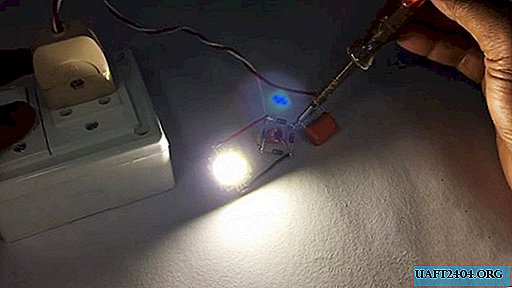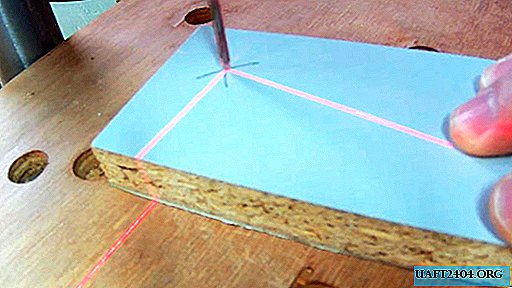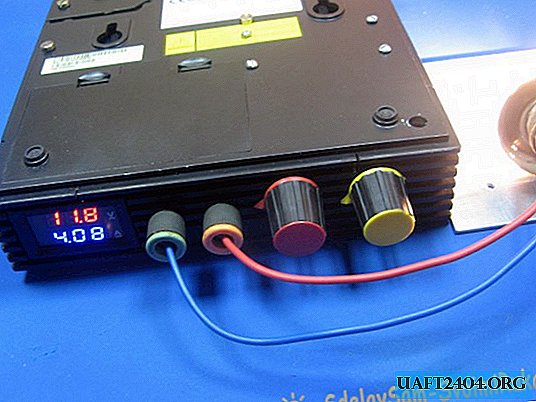Share
Pin
Tweet
Send
Share
Send

Materials:
- LED Matrix 12V 5W.
- 4 diodes 1N4007;
- 1 μF ceramic capacitor, voltage not lower than 400 V;
- 1 resistor in the range of 300 kΩ - MΩ;
- capacitor 220 uF 25 V;
- power cable with plug.
Transformerless assembly

First you need to solder together 4 diodes 1N4007, according to the scheme as in the photo. Pay attention to the polarity. It is important that the direction of the anode and cathode is as in the photograph. Beginning radio enthusiasts just need to navigate along the gray strip around the circumference of the diode housing. As you can see, one pair of them is connected by a strip to a strip, and the second by the dark sides. Correspondingly, the pairs are soldered together to the plain side.

For a capacitor of 220 μF 25 V, you need to unclip the contacts and solder them to the frame of the diodes. On its body there is a longitudinal strip. The electrode opposite to it is soldered to the contacts of the diodes of the connected strip to the strip. The contact adjacent to the mark is fastened, respectively, with the diodes from the side opposite to the strips.

Further, a ceramic capacitor of 1 μF (105J) is soldered with a single antennae to the existing circuit. To do this, it should be placed on the left hand and turn the marking towards you.

Between the antennae of the ceramic capacitor, a 1 MΩ resistor is soldered. It has no polarity, so it can be positioned on either side. This resistor is needed to discharge the capacitor when the power is disconnected from the entire circuit.

A consumer is connected to the circuit. In this case, a 12 V and 5 W LED matrix is used.

For it to shine, it is necessary to observe the polarity. The minus is connected to the electrodes from the side of the strip on the capacitor 220 uF 25 V. Plus, it is soldered opposite.

To power the circuit from a 220V network, you need to connect a two-core cable with a plug. One core is soldered to the electrode of the ceramic capacitor and resistor, and the second to the unused opposite part of the frame of the diodes.

Turn on the network.

Works great.
Important! Safety precautions
This is a very cheap source for supplying power to LEDs and their arrays, but it has one very significant drawback: it must not be touched so as not to get a discharge of 220 V, since the entire circuit does not have galvanic isolation. Therefore, this homemade product may not be suitable for everyone.
The finished source must be placed in a box of dielectric material. During operation, it is forbidden to touch even the LED matrix, keep this in mind.
Share
Pin
Tweet
Send
Share
Send











